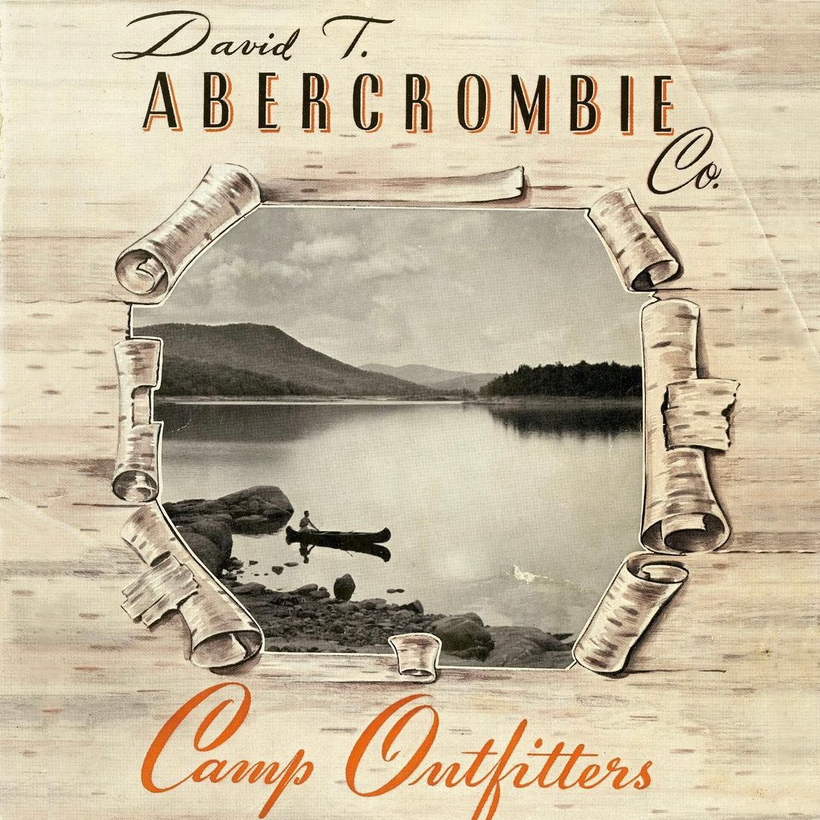Before Mike Jeffries turned Abercrombie & Fitch into a 2000s-era shrine of soft-core eroticism, ersatz sophistication, and sexual-exploitation scandals, the store was a trailblazer in quite another way—as the first stop in any explorer’s expedition.
Abercrombie Co. first opened its doors in 1892 on New York’s South Street, a short stroll from Wall Street’s brokerage houses, banks, and law firms, but a world away from the decorous tumult of gentlemanly business.
Neatly tucked in among waterfront warehouses, saloons, and marine chandleries, the location was ideal for a shop catering to the masculine pursuits of hunting and fishing.
The store became Abercrombie & Fitch in 1904, after Ezra Fitch, a devoted customer and lawyer bored with the law, bought into the company founded by David T. Abercrombie. However, despite continued success, it was a contentious partnership. Abercrombie left in 1907, leaving his name behind.
From the beginning, Fitch saw the value of aggressive promotion. Former president Theodore Roosevelt’s highly publicized expedition to East Africa in 1909 was partly outfitted by Abercrombie & Fitch, which later marketed the waterproof Tanalite tent, sometimes called “the Roosevelt tent,” and continued outfitting the adventurous Teddy with snake-proof sleeping bags and boots. The store also stirred up social ripples by offering women’s clothing with a line of outfits just as rugged, if not as practical, as the men’s wear.
The store’s catalogue included hundreds of pages of images exalting the outdoor lifestyle, accompanied by soaring and soothing prose: “Away from strife—away from the city’s nervous activities—away in the woods where Nature uses the trees and the lakes to provide us with the great lessons of the Universe, there is a restful sojourn awaiting you,” read the copy in a 1916 catalogue.
After a series of moves, the store finally landed in a 12-story building at 45th Street and Madison Avenue, a block from the new Brooks Brothers flagship store and an easy walk to Grand Central Terminal and the Oyster Bar. It featured a basement firing range as well as a rooftop pool for the testing of, and instruction on, fishing equipment.
There was also a log cabin on the roof, contentedly out of place amid Midtown’s office towers. Fitch used it as a rustic pied-à-terre, and during the colder months smoke streamed from its chimney, as invitingly as in any Currier and Ives print.
From the very beginning, the quality of goods offered was never in question. Ben Willis, an Arctic explorer, acted as an in-house designer for the store’s private-label offerings. (He would later launch his own brand, Willis & Geiger.) As well as outfitting Admiral Byrd’s and others’ polar expeditions, Willis designed the flight jacket worn by Charles Lindbergh on his historic 1927 solo transatlantic flight, not to mention the suede flight jacket for Amelia Earhart’s own 1932 transatlantic journey.
The store had a reputation for supplying any expedition, no matter the climate or circumstances. In the mid-1950s, it was reported, Abercrombie & Fitch outfitted oil-company workers with light chain-mail garments to protect them against poison darts on an expedition to South America. A common joke told of a customer seeking to outfit an expedition to Outer Mongolia, to which the unflustered Abercrombie & Fitch salesman inquired, “What season?”

Abercrombie & Fitch soon expanded into luxury leisure goods, selling chess sets, backgammon boards, dart boards, wicker picnic baskets, imported croquet and badminton sets, and board games. It was central to the 1920s mah-jongg craze, with Fitch reportedly dispatching buyers to China to buy as many sets as possible.
Portable-bar kits, with all the accoutrements neatly held in leather cases, were a popular item, as were tasteful flasks during Prohibition. In short, Abercrombie & Fitch was a toy store for adults, very much befitting its motto: “Where the blazed trail crosses the boulevard.”
During World War II, the store gained something of a whispered reputation for supplying equipment to the Office of Strategic Services (O.S.S.), forerunner of the C.I.A. “Brooks Brothers was the unofficial costume-maker while Abercrombie and Fitch functioned as an uptown Quartermaster Corps, supplying air mattresses and sleeping bags and all the paraphernalia so dear to the heart of small boys and civilians turned semi-guerrillas,” actor turned O.S.S. officer Sterling Hayden wrote in his memoir.
A common joke told of a customer seeking to outfit an expedition to Outer Mongolia, to which the unflustered Abercrombie & Fitch salesman inquired, “What season?”
Hayden, best remembered for his roles in Dr. Strangelove and The Godfather, had a point. The O.S.S. featured a surfeit of blue-blooded, Abercrombie & Fitch customers among its ranks. In 1942, President Franklin D. Roosevelt tasked the O.S.S. officers Ilya Tolstoy, grandson of the author, and Brooke Dolan, who hailed from Philadelphia’s mansion-rich Main Line, with a secret expedition across India into Tibet. They carried with them gifts from the president to a very young Dalai Lama, including a presidential letter, an autographed photo, and a gold Patek Philippe watch. The expedition’s equipment was from Abercrombie & Fitch.
The same year, in a far less hush-hush episode, the Life photographer Margaret Bourke-White became the first female war correspondent accredited by the U.S. military during wartime. The problem quickly arose regarding what her required uniform should be. “I was amused, but also rather pleased, by the seriousness with which the officers in the Army War College approached the design of the uniform,” she later wrote. “Abercrombie & Fitch entered the project with enthusiasm and turned out the first uniform.” The end result was based on a standard-issue officer’s uniform with the addition of a skirt.

There was no shortage of boldface names who shopped at Abercrombie & Fitch during its heyday. Greta Garbo, Howard Hughes, and Ginger Rogers were all seen there. It was the unofficial presidential center for leisure shopping, with William Howard Taft and Warren G. Harding purchasing their golf clubs there, and Woodrow Wilson, his riding equipment. Herbert Hoover bought fishing tackle, while John and Jackie Kennedy were also regular customers.
The store humored customers’ eccentricities with minimal eye rolls and pointedly overlooked bad behavior. You could send out for cocktails, and those who overindulged were permitted to nap in one of the spacious display tents. Katharine Hepburn reportedly rode a bike through the main floor, and when Clark Gable appeared in the fishing department early one morning “holding his head with his hands” after a night of heavy drinking, the clerk fetched a flask of black coffee to help him sober up. Over the following years, Gable would regularly take the clerk to ‘21’ to thank him for his kindness that day.
No less a figure than James Bond was a loyal customer. In a story published in the New York Herald Tribune in October 1963, “Reflections in a Carey Cadillac” (later retitled “007 in New York”), Ian Fleming had the fictional spy arriving in Manhattan on a routine mission, and then spending much of the story mulling shopping and dining options: “Scribner’s because it was the last great bookshop in New York and because there was a salesman there with a good nose for thrillers, and then to Abercrombie’s to look over the new gadgets and, incidentally, make a date with Solange (appropriately employed in their Indoor Games Department) for the evening.”

Despite its reputation as a New York institution, the store never received a popular cinematic or literary commemoration similar to those of Breakfast at Tiffany’s or Eloise at the Plaza, though not for lack of effort. In the 1964 film Man’s Favorite Sport?, Rock Hudson, playing opposite Paula Prentiss, is an Abercrombie salesman and fishing expert who has never been fishing. Directed by Howard Hawks, seeking to reprise the magic of his previous screwball comedies such as Bringing Up Baby and His Girl Friday, the movie fell flat with critics and audiences.
Similarly, 1967’s Fitzwilly, a Dick Van Dyke and Barbara Feldon caper film with a very young Sam Waterston, featured the theft of an Abercrombie exhibit from a sportsman’s show as a major plot point. It also failed to connect with audiences.
Still, the store maintained its mystique for decades. Ernest Hemingway, a longtime customer, shopped for bush jackets there, while Hunter S. Thompson frequently wore a brightly color-blocked Abercrombie & Fitch hunting jacket. The coat, as Thompson explained, included a plastic-lined game pouch ideal for carrying ice for cocktails.

But times mercilessly change. With many of its well-heeled customers growing too old for safaris, and with competition from mass retailers growing, the company declared bankruptcy in 1977. Harry G. Haskell, the chairman and a major stockholder, who once exhibited childhood friend Andrew Wyeth’s paintings in the store’s gallery, was unable to find a white knight. At the time of the going-out-of-business sale, he told The New York Times, “I can’t believe that the name won’t continue in one form or another.”
Haskell, who died in 2020, lived long enough to see his prediction realized. The venerable name that catered to the renowned and the obscure alike, who all felt, in Wordsworth’s words, “the world is too much with us,” was revived in the 2000s as a hugely popular lifestyle brand selling T-shirts and underpants to high-school teens. Not a fishing rod or snake-proof tent in sight.
Henry R. Schlesinger is a journalist and author who has written about espionage history for more than 20 years. His most recent book is Honey Trapped: Sex, Betrayal and Weaponized Love


